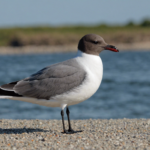Why propagate hydrangeas?
Propagating hydrangeas is a great way to create new plants that are exact clones of the chosen mother plant. This means that the new plant will have the same flower shape, color, foliage, and size as the mother plant. It is a simple and rewarding method of multiplication that can be enjoyed by both adults and children.
There are several reasons why you might want to propagate hydrangeas:
- To create new plants to expand your garden or create a hedge
- To rejuvenate older hydrangeas that have lost their beauty and bloom
- To obtain a new variety that has caught your eye
When is the best time to propagate hydrangeas?
For common deciduous varieties
The majority of hydrangeas are deciduous, meaning they lose their leaves in the fall. Some common deciduous varieties include Hydrangea macrophylla, Hydrangea paniculata, Hydrangea quercifolia, Hydrangea aspera, and Hydrangea arborescens. For these varieties, the ideal times for propagation are:
- In the spring, around May-June, for softwood cuttings
- In late summer, between mid-August and late September (depending on the region), for semi-hardwood cuttings
You can also try propagating hydrangeas from hardwood cuttings in the middle of winter, in January, but the rooting process may take longer during the cold season. However, late summer propagations usually yield the best results.
For evergreen species
Evergreen hydrangea species, such as Hydrangea seemanii, Hydrangea serratifolia, and Hydrangea petiolaris, are often climbers. Propagation for these species should only be done in the summer between July and September, using semi-hardwood cuttings. It is also worth noting that evergreen species can be easily propagated through layering, where a stem remains attached to the parent plant until it develops new independent roots.
Materials needed for propagating hydrangeas
Propagation of hydrangeas does not require many materials. Here is what you will need:
- A container with drainage holes, such as a plastic pot or a biodegradable pot
- A sharp and disinfected cutting tool, like scissors or pruners
- A pencil or stick for planting the cutting
- Potting soil or a custom mix of non-calcareous garden soil or regular potting soil combined with 50% river sand, perlite, or vermiculite for lightening
- A watering can with a fine rose or a mister
- If you don’t have a greenhouse or a cold frame, you can use a transparent cloche, a cut plastic bottle, or a freezer bag to create a warm and humid environment for rooting
- Optional: rooting hormone
How to propagate hydrangeas
Preparing the cutting
Choose a healthy and vigorous stem from the mother plant. For spring cuttings, the stem should be green and flexible. For summer cuttings, the stem should be semi-hardwood, which means firm and brown at the base but still green and tender at the tip. If possible, select a stem that hasn’t flowered yet.
Make a clean and slanted cut about 15 to 20 cm long just below a leaf node. The cutting should have at least three pairs of leaves.
Preparing the cutting for planting
Remove all the leaves from the lower third of the cutting. Leave only 2 or 3 leaves at the top, cutting them in half. This step prevents premature drying of the cutting and eliminates unnecessary foliage that could rot when buried. If the cutting has flowers, remove them as well.
Planting the cutting
- Fill the container with potting soil or the custom mix.
- Moisten the soil with the watering can or mister.
- Create a hole in the center of the container with the pencil or stick.
- Dip the bottom of the cutting into rooting hormone, then tap off any excess. While rooting hormone is not necessary, it can speed up rooting and the development of new roots.
- Place the cutting in the hole, burying it about 2 to 3 cm deep. If desired, you can plant multiple cuttings in one container, spacing them about 10 to 15 cm apart.
- Gently firm the soil around the cutting with your fingers.
- Water gently to avoid disturbing the cuttings.
- Move the container under a greenhouse or cold frame. If you don’t have one, place the chosen covering (cloche, bottle, or bag) directly over the cutting to create a warm and humid environment for rooting. Make sure the covering does not touch the foliage, and use stakes for support if needed.
- Keep the cutting in a bright location without direct sunlight, with temperatures ranging between 15 and 20°C.
Caring for the cuttings
To care for your hydrangea cuttings, simply water them regularly. As soon as the soil surface feels dry to the touch, it’s time for another watering. If you have placed a saucer under the container, make sure to empty it about 20 minutes after watering to prevent excess moisture that can lead to rotting.
Regularly remove the covering (cloche, bottle, or bag) once you see excessive condensation forming. This helps prevent the development of diseases.
After 4 to 6 weeks, you should start seeing new green shoots developing. Check the cutting’s rooting progress by gently pulling on it. If it resists, it means the cutting has successfully rooted. Remove any remaining protective coverings.
Once the leaves start to grow, you can transplant your cutting into a larger container with a mix of potting soil, acidic soil, and well-draining elements like sand, gravel, perlite, or volcanic rock.
Leave your young hydrangea in a sheltered location during the winter, such as a cool and bright room. Wait until at least the following spring to plant it outdoors. You can even let your hydrangea wait until the next autumn to give it time to strengthen before facing the outdoor conditions.



